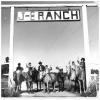Agate Bluff Archaeological Site
The Agate Bluff Archaeological Site is a collection of four Late Prehistoric rockshelters located in a large bluff in northwest Weld County near the Wyoming border. In 1951–52 siblings Cynthia and Henry Irwin excavated the rockshelters and determined…

























































































































































































